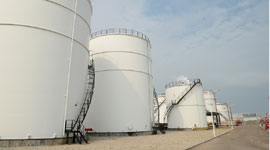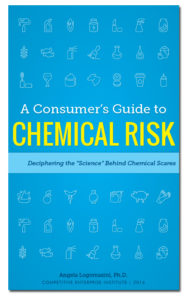 After the September 11, 2001 terrorist attacks green groups started marketing their anti-chemical campaign under the banner of national security. They said, we needed to eliminate “hazardous chemicals” used in industrial plants or risk terrorist attacks of those plants that might release these chemicals into communities. Greens suggested that the toxic and hazardous chemicals could easily be replaced with “inherently safer technology.”
After the September 11, 2001 terrorist attacks green groups started marketing their anti-chemical campaign under the banner of national security. They said, we needed to eliminate “hazardous chemicals” used in industrial plants or risk terrorist attacks of those plants that might release these chemicals into communities. Greens suggested that the toxic and hazardous chemicals could easily be replaced with “inherently safer technology.”
It is certainly a good idea to find the most effective products with the lowest manageable risks, but that’s not really what the political meaning of “inherently safer technology” encompasses. It embodies the idea that greens and government bureaucrats knew better than manufacturers and their engineers what chemicals are safest and still effective. But there are two major problems here. First, the concept of “inherently safer” is largely nonsense, since everything presents risks that need to be weighed against the benefits. There’s no magic wand to waive to make the world safer, rather we must manage risks of everything in life if we are to the gain the benefits. And second, following green advice about what technologies to use is simply dangerous because they so often get it wrong!
Consider the first point. Everyone engages in inherently risky behavior every day. We drive cars, take medicine, get immunizations, and risk slipping in the shower. We choose these risks because they enhance our lives, health, and overall safety.
Using chemicals also carries risks, but the benefits have proven profoundly important for human well-being. And the properties that many chemicals possess that greens seem to think are intolerable yield important benefits. Consider one of the main targets of the chemical phase-out crowd: chlorine. Chlorine can burn your skin and eyes, but those same properties are what make it valuable for cleaning drinking water that otherwise might carry deadly pathogens. Accordingly, we may not be able to find something that’s inherently safer and expect it to work as well.
In fact, replacing chlorine to serve a political agenda creates new, more significant risks, which underscores the second point: Green advice is often more dangerous than the status-quo because they refuse to adequately consider the trade-offs of their policies.
For example, Greenpeace has advocated a ban on chlorine,(1) and after the terrorist attacks in September 2001 urged communities to curb its use in water treatment plants.
Never mind the fact that the strategic use of chlorine has help attain some of the greatest public-health achievements in history.(2) It saves millions of lives every day when it is used in water treatment. It is used to make an overwhelming majority of pharmaceuticals, disinfect medical equipment, keep our hospitals sanitary, and kill bacteria on our produce.
Residents in Peru learned about the risks of not using adequate chlorination in their water in 1991. Scientific journals have cited inadequate chlorination as a key contributor to an epidemic in South America that produced a million cases of cholera and thousands of deaths.(3)
Green groups often suggest that bans will force the development of better substitute technologies that pose lower risks, but often the alternatives are more expensive and less effective, while presenting a new set of risks. In addition greens and regulators often ignore the costs of such alternative technologies. They don’t consider whether it would make more sense to force a small rural community to put off buying a fire truck in order to pay for more expensive technologies because of bans or regulations. Yet the absence of a fire truck almost certainly poses greater risks — since, for most communities, fires are much more likely than terrorist attacks.
At the end of the day, the reason industry, local governments and others selects certain chemical products is because they serve a purpose, are affordable, and present manageable risks. That’s not to say accidents don’t or won’t happen. But banning products or allowing regulators to get involved in manufacturing decisions is likely to do more harm than good.
Browse the terms on the sidebar of this webpage for more details and/or download a copy of A Consumer’s Guide to Chemical Risk: Deciphering the “Science” Behind Chemical Scares.
(1) Ivan Amato, “The Crusade against Chlorine,” Science 261, no. 5118 (1993): 153.
(2) J. Michael LaNier, “Historical Development of Municipal Water Systems in the United States, 1776–1976,” Journal of the American Water Works Association 68, no. 4 (1976): 177.
(3 )Enrique Gersi and Hector Naupari, “Dirty Water: Cholera in Peru,”Environmental Health: Third World Problems— First World Preoccupations (Oxford: Butterworth Heinemann, 1999); David L. Swerdlow et al., “WaterborneTransmission of Epidemic Cholera in Trujillo, Peru: Lessons for a Continent at Risk, The Lancet, July 4, 1992; and “Of Cabbages and Chlorine: Causes of Cholera Epidemic in Peru,” The Lancet, July 4, 1992.


